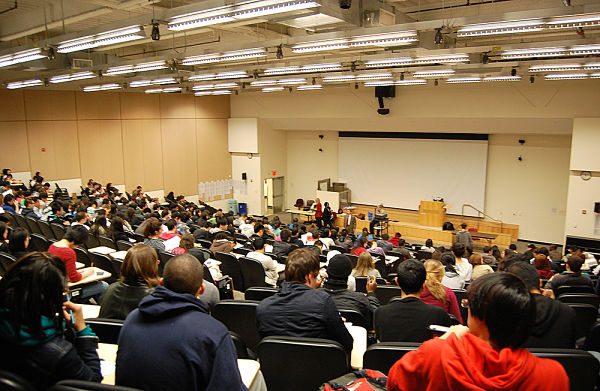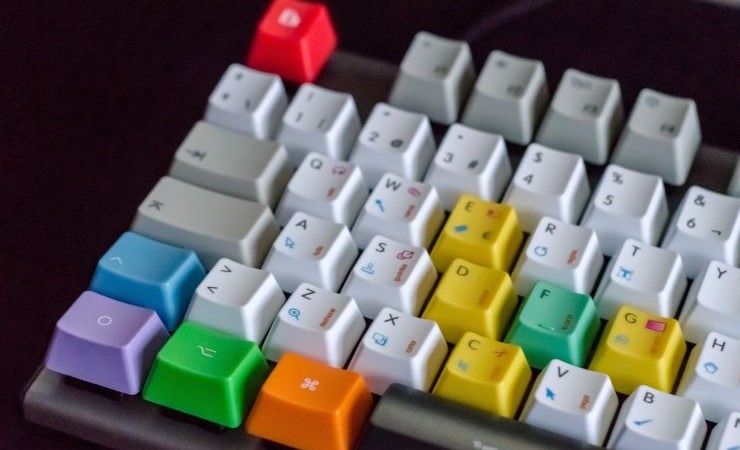 Teaching
Teaching Is the End of the Lecture in View?

(Photo by Xbxg32000 /Own work by uploader; the watermark is my own./CC BY-SA 3.0) or GFDL, via Wikimedia Commons)
Lectures have been around for hundreds of years. They have survived other technological revolutions, including the printing press and the motion picture. Adelaide will be the first university in Australia to break with tradition and eliminate them entirely. But is this change good for learning?
‘Flipped’ classrooms
The University of Adelaide’s move is part of a growing trend to “flip the classroom” by swapping what students do in class with what they do out of class. The flipped classroom is where lectures and other passive learning activities take place at home, while problems, questions and other activities that require socialising and interaction take place in the presence of the teacher.

This article by Phillip Dawson originally appeared at The Conversation, a Social Science Space partner site, under the title “Will the University of Adelaide’s lecture phase-out be a flop?”
Research on the effectiveness of the flipped classroom approach is beginning to trickle out, but it’s not necessarily an evidence-based practice yet. However, if we examine the components of this approach, the outlook is positive.
If the lectures Adelaide is ditching are monologues without any interactivity, then video is probably going to be a good replacement. Decades of research suggest this is not a great use of precious face-to-face time; some have even claimed lectures are as bad for learning as smoking is for health.
Since the 1920s, researchers have been conducting “media comparison studies” where the same teaching approach (for example, the lecture) is applied to two or more media (one is usually face-to-face).
These studies began with emerging approaches like correspondence courses and radio, and later progressed onto video teaching. When we pool together these studies we find, on average, that there is no significant difference in learning between different media – assuming we teach in the same way. So learning won’t be much better, or much worse, from a face-to-face or video lecture.
While there may be no significant difference in learning, online lectures put students in control. There is evidence that students fast-forward through parts they already understand, and re-watch parts they struggle with. Researchers call this “learner pacing” and it has been found to help students manage the cognitive demands of their studies. Learner pacing can even mitigate against some bad teaching approaches.
Ban lectures or just change them?
If the choice is between being talked at non-stop for an hour face-to-face or by video, then please give me the video. The problem is, this is rarely the choice.
Delving deeper into the damning evidence on lectures, it turns out that only classes that were more than 90 percent passive listening were “as bad as smoking”. Walk into a modern lecture and you’ll be unlikely to find a 60-minute monologue. It’s more a caricature than a common practice. Bebbington claimed the lecture is dead, but really it just evolved.
The anti-lecture evidence actually just supports good lecturing practice: require students to spend at least 10% of the lecture discussing or problem solving.
If Adelaide’s lectures are long speeches, put them online. Or even better, divide them into smaller chunks first, as lecture video length strongly influences attention. But if students are already required to be active in lectures, then it’s a more subjective decision.
Another challenge of Adelaide’s new model is that class time becomes more dependent on students completing their pre-class tasks (for example, watching the video). When students aren’t prepared for their small group learning session, it turns a flipped classroom into a “flop”, because the teacher needs to catch up some of the students.
The good news is that flipped classroom approaches like Adelaide’s may help students develop a sense of autonomy, feel competent, and get connected with other students. Developing these attributes should lead to improved motivation – and hopefully result in students preparing for class. However, this connection between flipped classrooms and motivation remains at best a theoretically informed hunch.
So, is the move to phase out lectures supported by the evidence? I’m always wary about blanket bans on any particular approach to teaching or assessment. It really comes down to the individual lecture, and whether Bebbington’s classrooms flip or flop.![]()
































































































